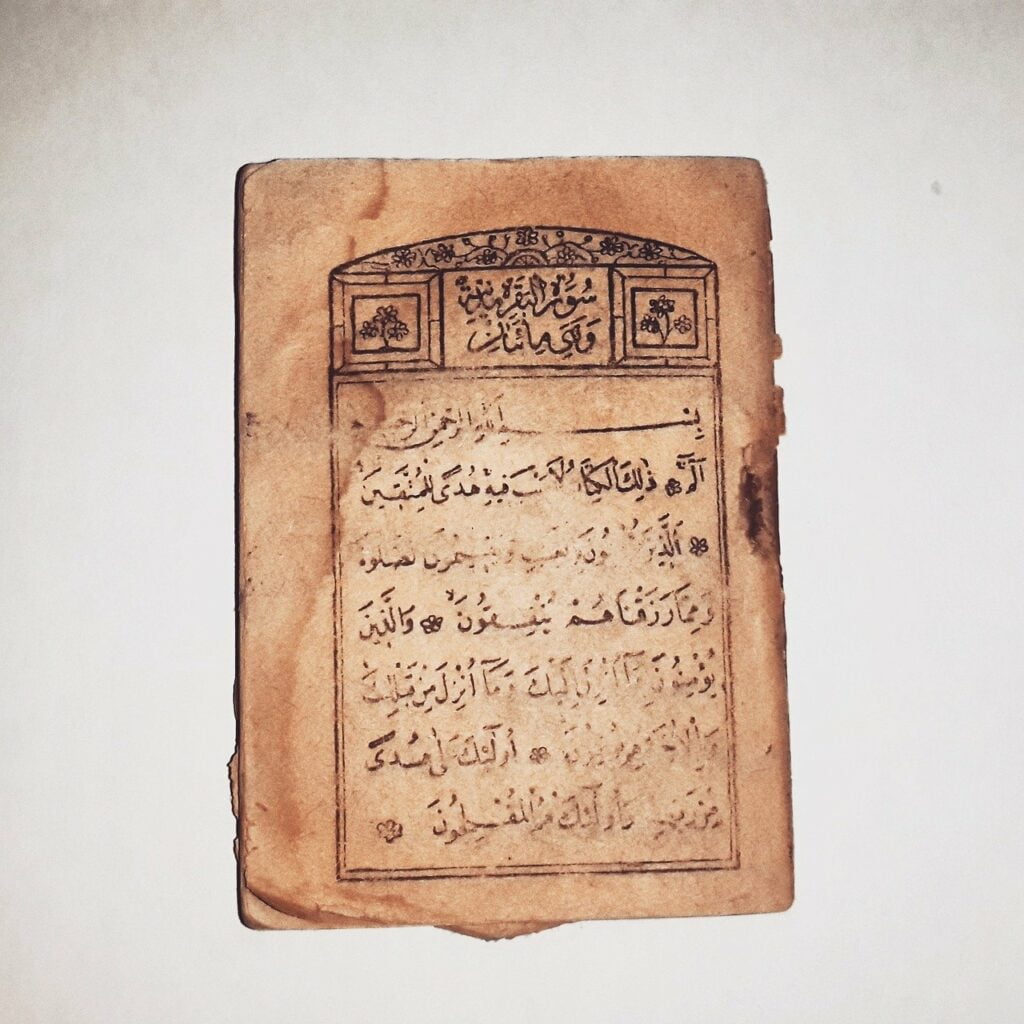

The Arabic language is one of the richest languages across the globe. You might want to study it to read Quran or you tend to read Arabic texts or delve into the Arabic culture. Maybe you want to study Arabic to land a job in gulf countries or work in Arabic language translation or you love to chat with Arabic people.
There’re many reasons to study Arabic, varying from one person to another. Though studying Arabic is a little bit hard, it’s one of the interesting experiments that could change your life ultimately.
This article will give you an introduction to the Arabic language, how did it originate and how it did evolve through history, keep reading.


In Arabic how are you? means كيف حالك? and you can answer by الحمد لله ( Alhamdillah or thanks god in English).
The Arabic language is called لغة الضاد (which means the language that has the ض letter). No language in the world contains this letter, which feels hard for non-native speakers to pronounce.
Arabic is descended from the Semitic language and was spoken in the southern Levant and northeastern Arabia in the early first millennium BC. We can classify The ancient Arabic dialects in this time into two groups: the northern dialect spoken by the population living in the Levant, and the southern dialect spoken by people in North Hijaz.
Tracking the oldest written evidence of the Arabic language, we can find Assyrian cuneiform inscriptions for some people living in the ninth century B.C. Those inscriptions stand as a testimony to the diverse fabric of Arabic dialects in this age.
In the fourth century BC, the Arab Nabataean kingdom was established, and it straddled the south and north, causing the Arabic language to take hold in the areas it took over, including the north of Hijaz.
Between the fourth and sixth centuries, and under the commercial influence of the Nabataean kingdom, a unified form of the Arabic language emerged. However, Standard Arabic wasn’t turned to be literary language until the middle of the sixth century when the oldest forms of Arabic poems blossomed.
There are many ways to say Hi in Arabic
شكرًا
صباح الخير
السلام عليكم
لا
Arabic is It’s the official language for 22 countries, including Algeria, Bahrain, Egypt, Iraq, Jordan, Kuwait, Lebanon, Libya, Mauritania, Morocco, Oman, Qatar, Saudi Arabia, Somalia, Sudan, Syria, Tunisia, United Arab Emirates, and Yemen
16. How did Arabic spread in Africa?
Arabic language in Africa has a massive presence and it’s often intertwined with Islamic rituals. Islam has penetrated Africa through trade. Based on the evidence we have, historians believe that, at first, West African kings attempted to cease the growth of Islam by separating the Islamic communities from the African ones.
However, the tide of Islamic caravans coming from the north overwhelms the edicts of the kings. Over time, the Arabic language began to seep into African communities so we can say trade doesn’t only carry goods but most importantly the Arabic language to Africa.
Those are the steps you must follow to have a good command of Arabic. But, first, you’ve to decide which type of Arabic you intend to study. Arabic has three levels. Based on your purpose of learning Arabic, you can identify which level to learn.

Also known as Quranic Arabic, this is the standardized literary Arabic language used from the 7th century and throughout the Middle Ages. You can find books written in it in Umayyad and Abbasid literary texts such as poetry, elevated prose, and oratory. It is also the liturgical language of Islam.
You can study it should you’re interested in studying Quran, Hadith, Islamic studies, and literature before Islam and to the 18the century.
Shortened MSA, this term is used mostly by Western linguists to refer to that standardized, literary form of Arabic developed in the Arab world in the late 19th and early 20th centuries. MSA is the language used in literature, academia, print, mass media, law, and legislation.
Though it is generally not spoken as a first language, it’s endorsed in the Arab world in the formal educational books and it differs significantly from many dialects spoken around the Arabian regions, though many words of MSA can be noticed in the daily spoken conversations.
Western linguists consider MSA to be distinct from Classical Arabic since it includes words from Arabic roots (such as سيارة car or باخرة steamship), Besides it loans words from European languages (such technology تكنولوجيا Internet إنترنت) to describe modern terms. However, most Arabic people don’t consider classical Arabic and Modern Standard Arabic as two distinct groups.
You can learn MSA if you want to study modern Arabic and read modern literary books.
It is an umbrella term that involves a variety of dialects of spoken Arabic around the Arabic regions. And those dialects are hard to translate since it’s so affected by the cultural elements which differ from one country to another. It’s not used in the already prepared speeches but can be seen tremendously in everyday conversations.
Geographically, modern Arabic varieties are classified into five groups: Maghrebi, Egyptic, Mesopotamian, Levantine, and Peninsular Arabic.
Learn colloquial Arabic in case you want to travel or communicate with people from specific regions, for example, learn the Egyptian dialect to speak with people from Egypt.
Learn also: What’s the best way to learn Arabic in practical tips?
Arabic is one most interesting languages to learn. It’s one of the oldest languages that endured through centuries. and it evolves from the Semitic language into the standard Arabic used currently as the official language in the Arab region.
Interested to learn Arabic, Just enroll in our courses and let our native speakers shorten the journey for you. Have a trial session from here.

